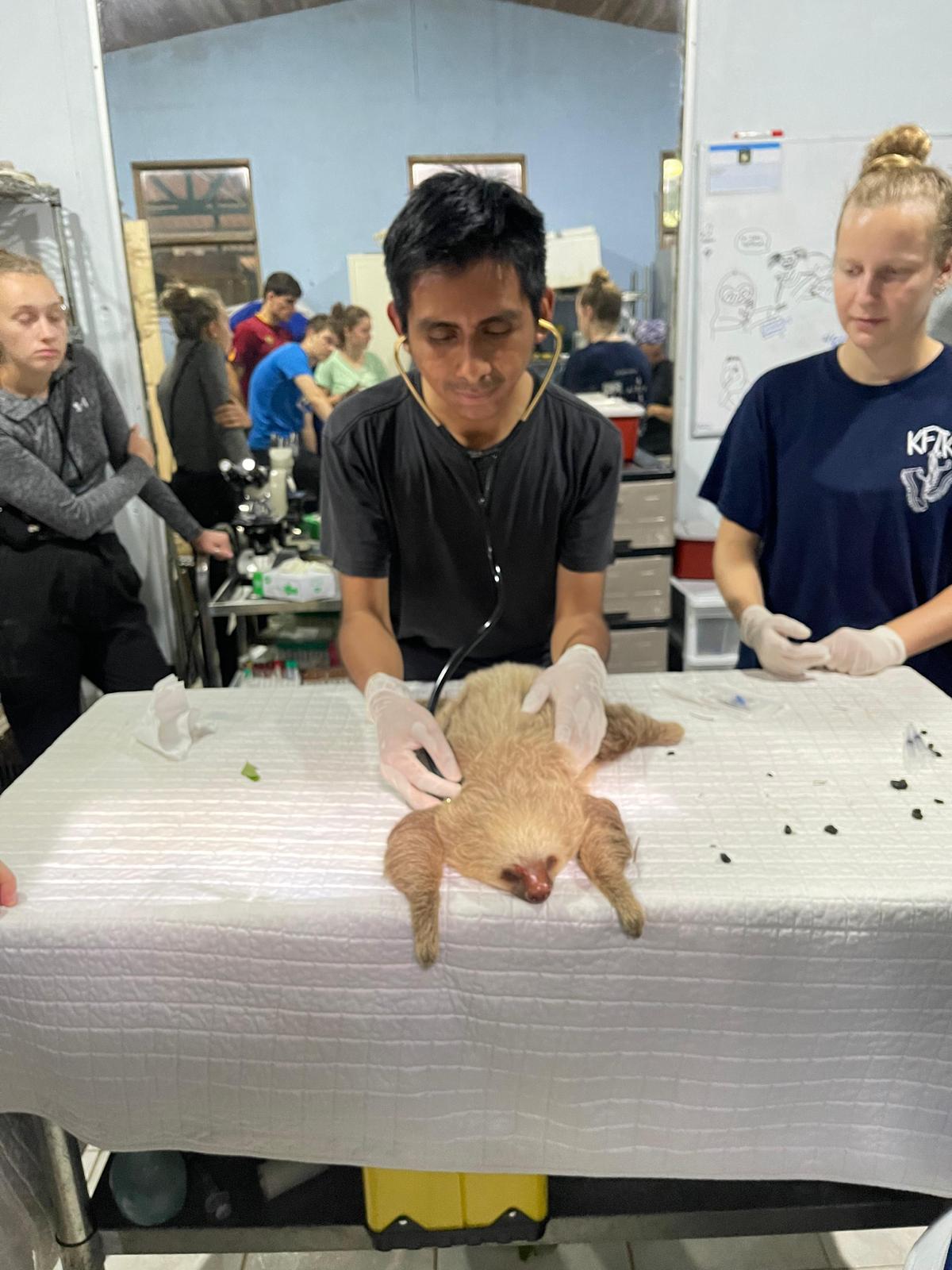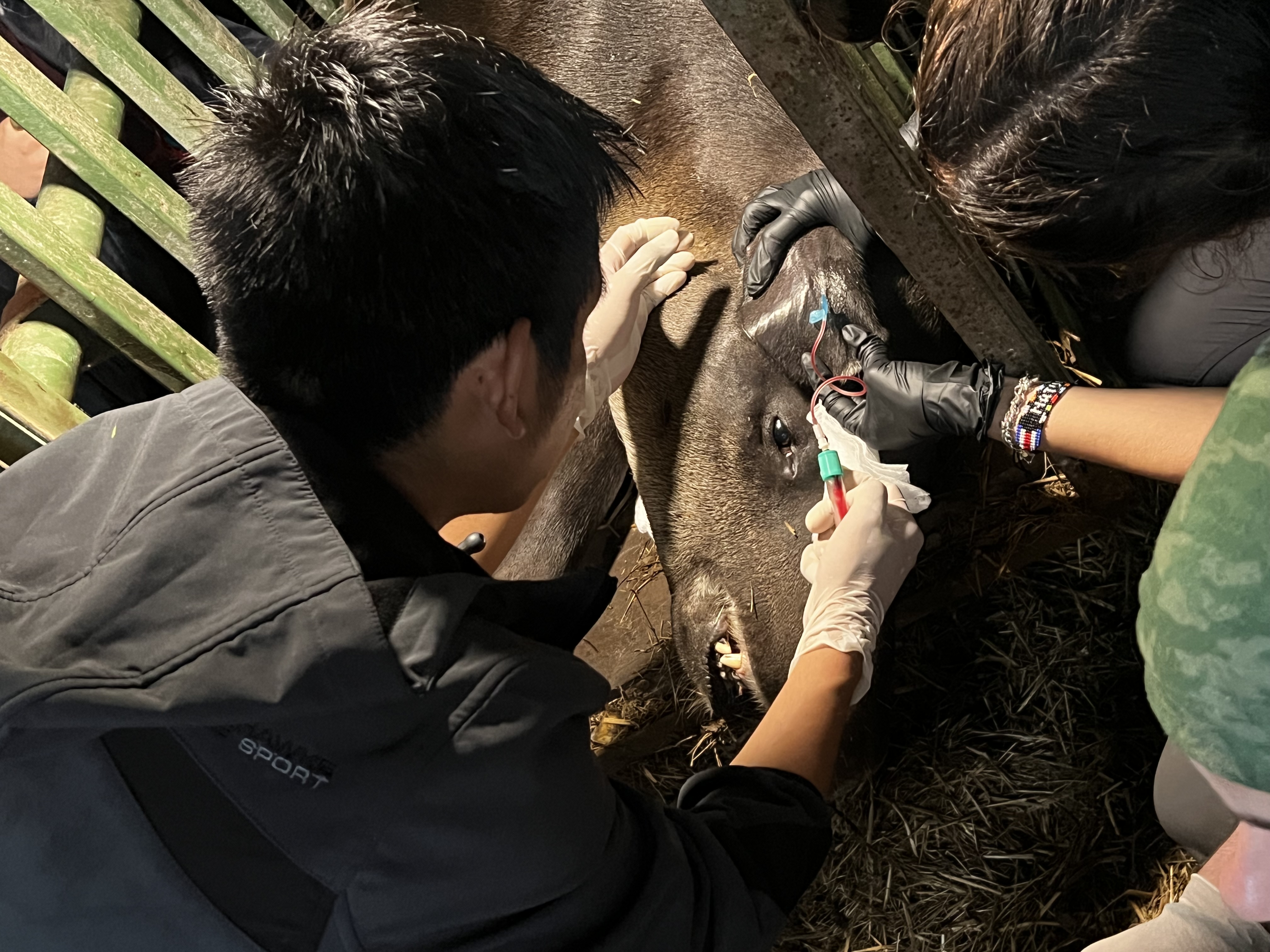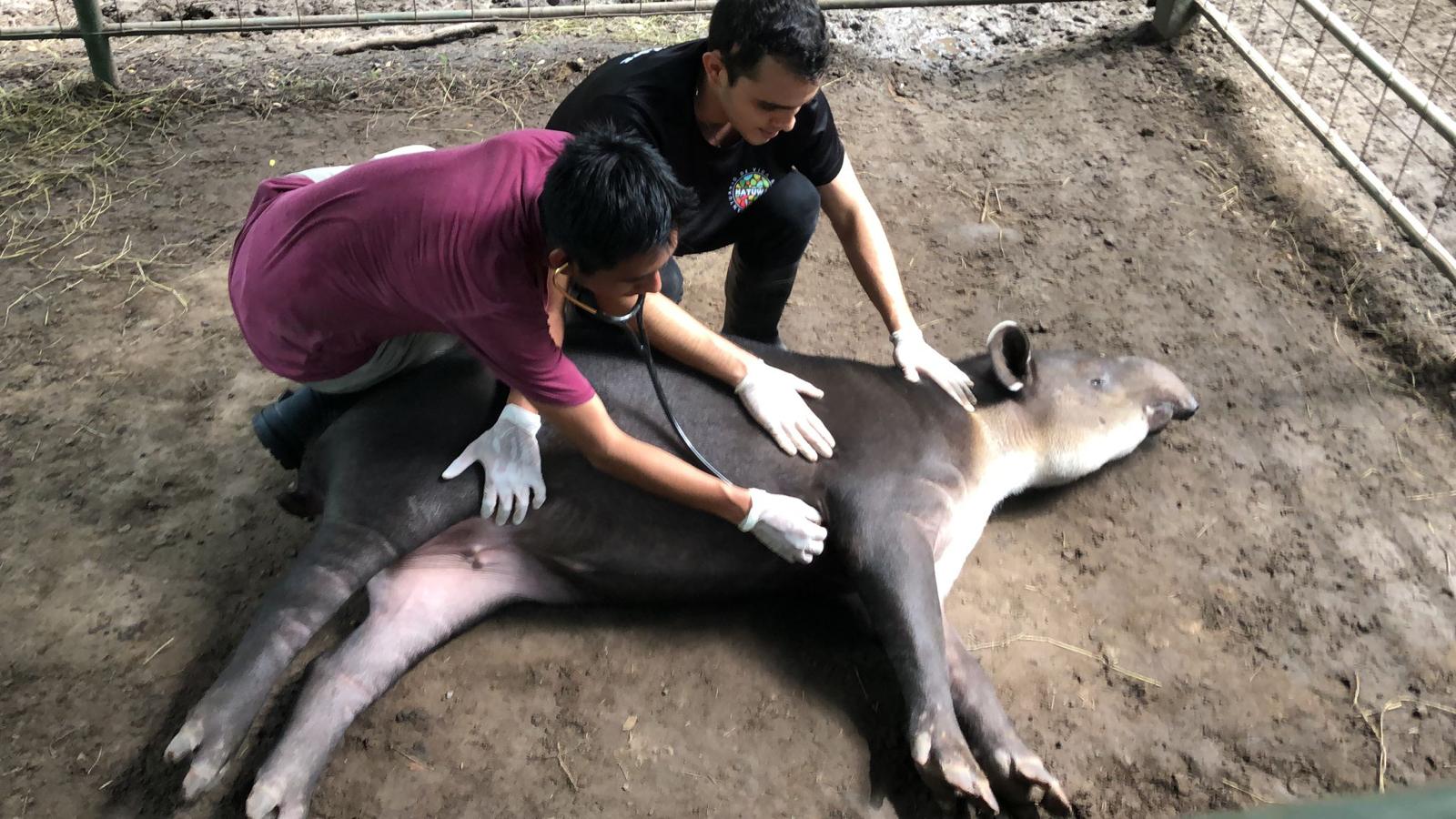Sean Garcia
I spent 4 weeks in Costa Rica working at the NATUWA wildlife rehabilitation centre. There I had the opportunity to work with an array of amazing native Costa Rican species ranging from mammals (jaguars, sloths, tapirs, monkeys) to reptiles (iguanas, tortoises) to birds (macaws, parrots, cockatoos). Most of the animals were permanent residents of the facility as they were non-releasable due to injuries, health problems, or behavioural problems. For them, we treated a tapir that had become inappetent and was losing weight, macaws that had feathers mites, and a 3-limbed sloth that developed a skin wound. We also had two intake patients that were presented to us: an olingo who had a fractured foot and bite wound on his tail and a young coati that had become habituated to humans.
In addition to the medical treatments, we also learned about a range of husbandry and technical skills related to working with the various species. We learned about their diets. We helped to build an enclosure to house the olingo. We learned how to make DIY sutures and blow darts from basic hospital equipment for the times we might not have access to all the materials we need. We worked closely with biologists and husbandry volunteers to ensure that all the day-to-day needs of the animals were being upheld.


But, the absolute best part of the whole experience was working with the rest of the veterinary team. There was around a total of 15 pre-veterinary students, veterinary students, and veterinarians at a time. We came from all over the world, from fellow Americans to French to Brits to Grecians and more. We all had various levels of knowledge and skills that were helpful to one another. But more importantly, we were all open to the experience of working with other international veterinary workers. Without a doubt, if it had not been for the amazing people that I met during my time there, the whole experience would have been completely different.

